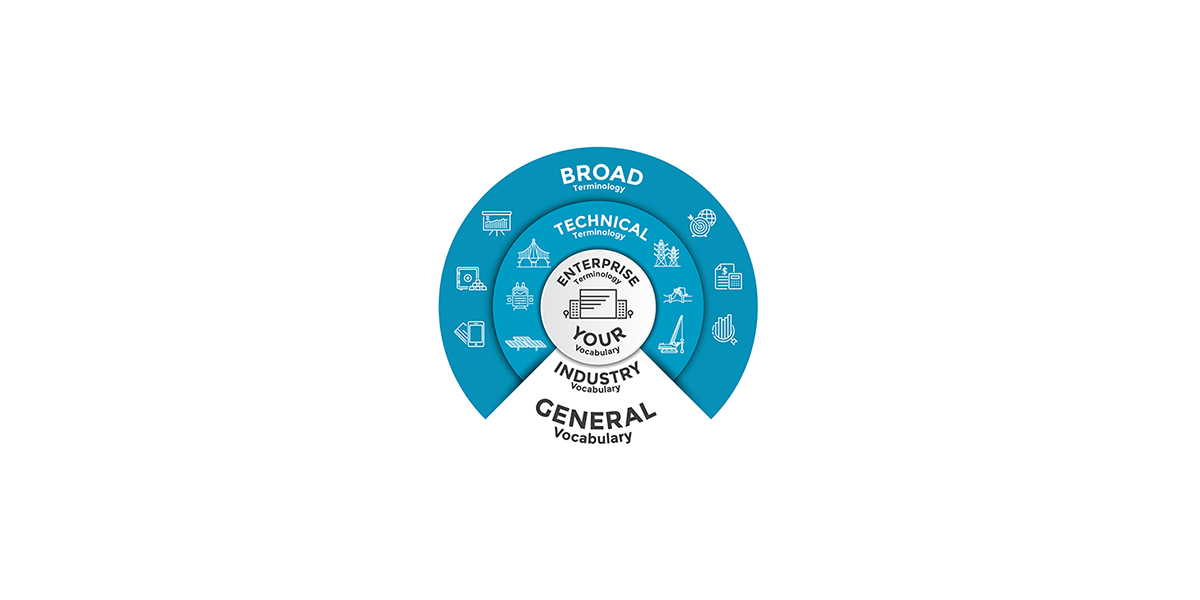
Why specialized translators aren’t the answer to your translation quality expectations
Specialized translators should be a starting point, a non-negotiable. However, without the systematic addition and validation of your terminology, specialized translators can only rely on available technical terminology within the industry. What they really need to be able to rely on, is your enterprise terminology.
Let’s take a look at the difference between technical and enterprise terminology, and how they affect the quality of the translations you receive. While translators will remain the key catalyst for ensuring final quality, it is statistically impossible for them to choose every term correctly using technical terminology alone.
Technical terminology, in the realm of a specific project, refers to a group of terms relevant to the contents’ industry or adjacent subject areas. When you are lucky enough to find an agency with resources specialized in your field, you will have the benefit of translators that can recall industry terms from memory, and make difficult distinctions between similar terms and concepts. However, you will still be missing an important ingredient: ensuring your specialized translators select your preferred wording.
Enterprise terminology on the other hand, is a collection of terms from both technical terminology and general vocabulary, that have been handpicked, defined, translated and approved because they are frequently used or represent key terms within the company. This type of terminology stems from a close collaboration between you and your translation provider. When properly implemented, the use of this reference reduces uncertainties and introduces efficiencies that grow exponentially with the complexity of your content. However, when overlooked, it will undoubtedly cost your organization more than the basic investment required to manage terminology.
Since management of enterprise terminology is often misunderstood, it is habitually underfunded or completely ignored, with dire consequences. As a gatekeeper for your company’s brand, it is important to realize that terminology is one of your most important assets. The initial price for such terminology efforts may appear high and a difficult sell. Nevertheless, it is important to consider presenting a business case showing possible ROI in order to increase management buy-in. This is a topic in itself and it will be discussed in a later article.
Enterprise terminology and its correct implementation is the key to reaching your translation quality expectations.
What a typical enterprise terminology collaboration looks like:
- Definition: Your professional translation provider, with deep expertise in terminology, should sit down with you and discuss your business, your business units, your products and/or services, your goals, your target market, etc. The goal is to define your vocabulary. Then, based on this information, they should propose the best structure for your term base, based on categories from the ISO 12620:2009 standard or other relevant ones.
- Collection: Based on this discussion, you should gather as much reference material as possible. Any bilingual references or unilingual lists that could help your translation provider should be shared. Read our earlier blog post entitled 4 ways you can help your professional translation agency deliver the quality you expect for some ideas of where to start.
- Extraction: Your provider should then go over all the material you provided, including website, marketing material, etc. to extract all frequent and key terminology. This extraction can be bilingual if the reference is bilingual, or unilingual if no matching translation is available. Should the extraction be unilingual, your provider should translate these terms to the best of their ability for your approval. In his paper “The Economic Value of Terminology”, Guy Champagne estimates that terminology is required for about 4-6% of words in a text. You can expect approximately that percentage of your content to be added to a term base.
- Validation: A time consuming but essential part of the process is to validate the extracted terms. These choices can be made by various parties within your organization. If your company does not have a subject matter expert for a specific language, you might find it beneficial to either ask a client for their opinion or a third-party linguist specialized in your field and target. The main effort is required when validating the translation of the initial term extraction, followed as periodic review for newly added terms.
You might think validating costs a lot. However, you should consider that it can cost 10-20 times more to fix a term at the end of the translation cycle than at the beginning (Xerox, JDEdwards). Take a look at the following chart:

This process is most useful for companies that require a large or constant stream of translation work. It is feasible to apply it to smaller projects, but it will take longer to breakeven on the initial effort. Also, different quality requirements often dictate budget, and thus the amount available for terminology efforts.
Therefore, the sooner you implement terminology, the more you will save. It can be done as early as when you are designing your product or service. If you define a concept prior to introducing it multiple times in a text, then probably you will use this term consistently, thus the chances it will also be translated consistently and shared with your provider will be vastly improved.
Finally, while all content types and industries can benefit from tight terminology management, content that will benefit the most is undoubtedly repetitive and complex in nature, such as technical documentation and publications from regulated industries, such as legal, engineering and medical.




Leave a Reply